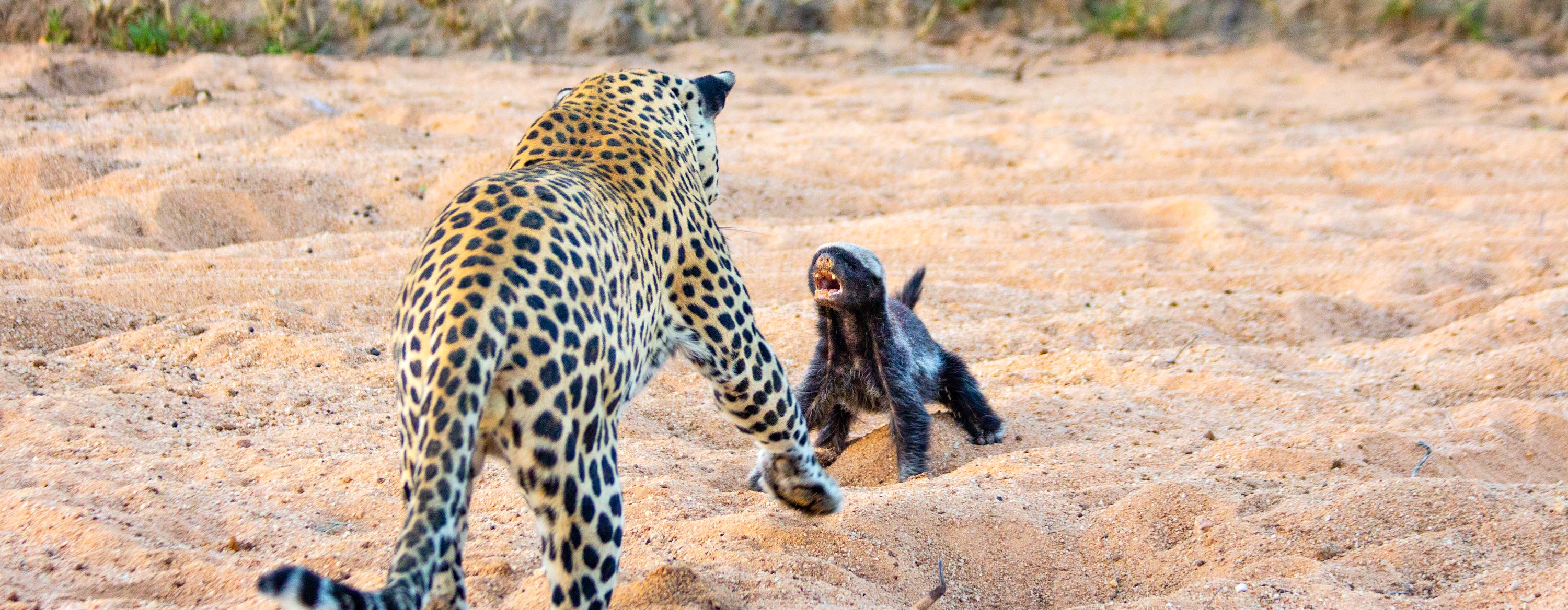
The next steps for carnivore conservation in Namibia
2nd November 2022
Namibia is home to 34 terrestrial carnivore species – from Aardwolf to Zorilla (striped polecat), from the diminutive dwarf mongoose to the heavyweight lion, not to forget the world's fastest land mammal (cheetah) and the renowned ‘tough guy' of the African savannah (honey badger). Each species is unique and fascinating in its own right; all of them are worth conserving as part of Namibia's natural heritage.
Producing the Carnivore Red Data Book
Conserving any species requires a detailed understanding of its current distribution and population trends, ecology and behaviour, alongside the known threats it faces. Drawing together all of this information in the Conservation Status and Red List of the Terrestrial Carnivores of Namibia (Carnivore Red Data Book for short) was no mean feat. From the initial idea during a workshop in 2017 until the final editorial touches and publishing earlier this year, the Carnivore Red Data Book involved 25 species assessors, 30 contributors and 31 reviewers.
As a joint publication between the Ministry of Environment, Forestry and Tourism (MEFT), the Large Carnivore Management Association of Namibia (LCMAN) and the Namibian Chamber of Environment (NCE), this book is a testament to a successful collaborative process. Yet this is just the starting point for building a cohesive, joint action plan for carnivore conservation in Namibia. Having identified the threats and actions for each carnivore species, these and other stakeholders must work together as part of the newly established Carnivore Working Group to put these ideas into practise.
National Red Data Books follow a system created by the International Union of Conservation of Nature (IUCN) to determine the conservation status of each species. While the process is similar nationally and internationally, the global status of a species may be different to the national status, as it may be more or less threatened in one country than it is in the rest of the world.

Namibian environmental conditions result in species that thrive in wetter environments (e.g. otters, serval) being naturally rare, while species that prefer drier environments (e.g. brown hyaena, black-footed cat) are favoured. For example, the black mongoose clearly favours the dry, rocky habitats in north-western Namibia and south-western Angola, as it occurs nowhere else on earth.
| Species | Global Status | Namibia Status | Namibia Range (km2) | % Global range | Population estimate | Trend in Namibia |
|---|---|---|---|---|---|---|
| African wild dog | EN | CR | 131,700 | 10.1 | 137-359 | Stable |
| Cheetah | VU | EN | 439,400 | 14.1 | 1,500 | Decreasing |
| Black-footed cat | VU | VU | 538,000 | 24.3 | 2,600 | Decreasing |
| Leopard | VU | VU | 776,800 | 9.1 | <12,000 | Variable |
| Lion | VU | VU | 94,300 | 5.7 | 800 | Stable |
| Spotted hyaena | LC | VU | 399,800 | 2.7 | 615-715 | Stable |
| Brown hyaena | NT | NT | 685,600 | 28 | <3,000 | Stable |
| Serval | LC | NT | 291,000 | 2.3 | 1,500-4,000 | Stable |
| African clawless otter | NT | NT | ±34,000 | <1 | Unknown | Decreasing |
| Spotted-necked otter | NT | NT | ±23,000 | <1 | Unknown | Decreasing |
| African striped weasel | LC | NT | ±46,000 | <1 | Unknown | Unknown |
Key threats to Namibian carnivores
In the Namibian assessment, all 34 species fell within the categories from Least Concern to Critically Endangered. Eleven species were classified as Near Threatened or worse, including five cat species, two hyaena species, the African wild dog, two otter species and the African striped weasel. All of these except the weasel face known threats to their survival. Reducing or eliminating these threats are the main focus of carnivore conservationists across Namibia.

Whereas some individual species will require action plans tailored to the particular threats they face, multiple species would benefit from action plans that tackle the most common threats. Based on the Carnivore Red Data Book assessments, three threats affect eight species each: human-wildlife conflict, bycatch, and habitat loss, degradation or fragmentation.
While many carnivores are deliberately killed due to human-wildlife conflict (either in response to livestock losses or as a preventative measure), others are killed accidentally when other animals are being targeted – an issue known as bycatch. Carnivores that do not cause livestock losses at all can thus be killed as bycatch when snares, gin traps or poison are used to remove livestock-killing species. Poison is the worst of these methods, as it threatens vultures and birds of prey that are also threatened with extinction. Snares and gin traps are a close second, affecting many non-target animals. Reducing indiscriminate killing methods therefore requires special attention as part of broader plans to address human-carnivore conflict. This includes encouraging farmers to protect their livestock within healthy functioning ecosystems rather than fighting predators and in the process causing significant damage to their environment.

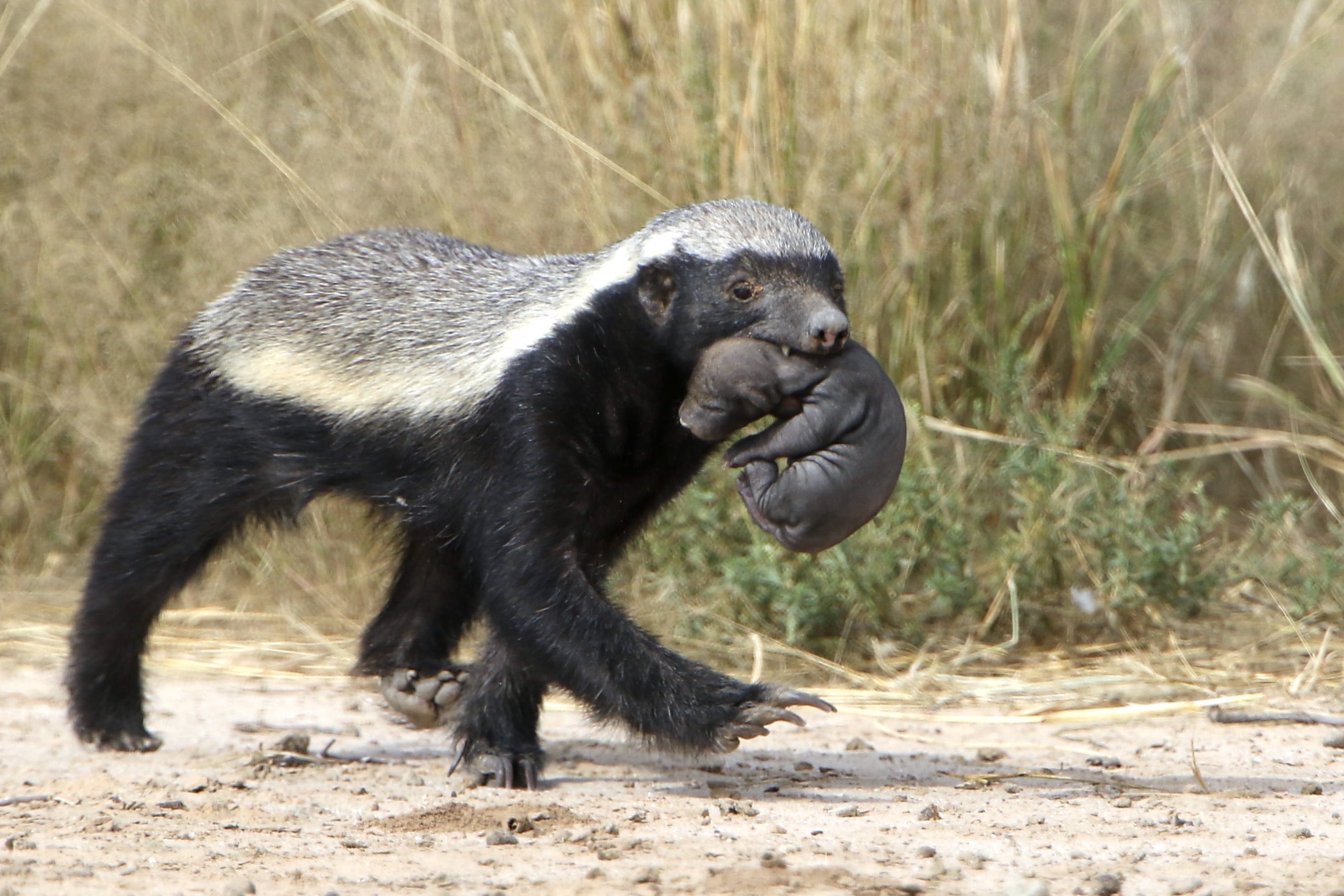
In the wetter areas of Namibia, habitat loss is caused mainly by land transformation to crop fields and through deforestation. In drier areas, habitat is more likely to be degraded due to poor rangeland management (e.g. resulting in bush encroachment or other ecological changes) or fragmented by game-proof fencing that prevents some species from accessing the available habitat. When combined, these three habitat-related threats affect eight carnivore species.
Poaching or live capture for the illegal wildlife trade were described as threats to seven species, largely based on increased poaching in other countries that could become a problem in Namibia if left unheeded. The demand for lion bones and claws, leopard skins, and hyaena (both species) body parts in the Far East and within Africa (for status or traditional medicine purposes) drive poaching of these species. Capturing live cheetahs to be kept as pets within Namibia is problematic, although this is on a much smaller scale than the demand for pet cheetahs in the Middle East.
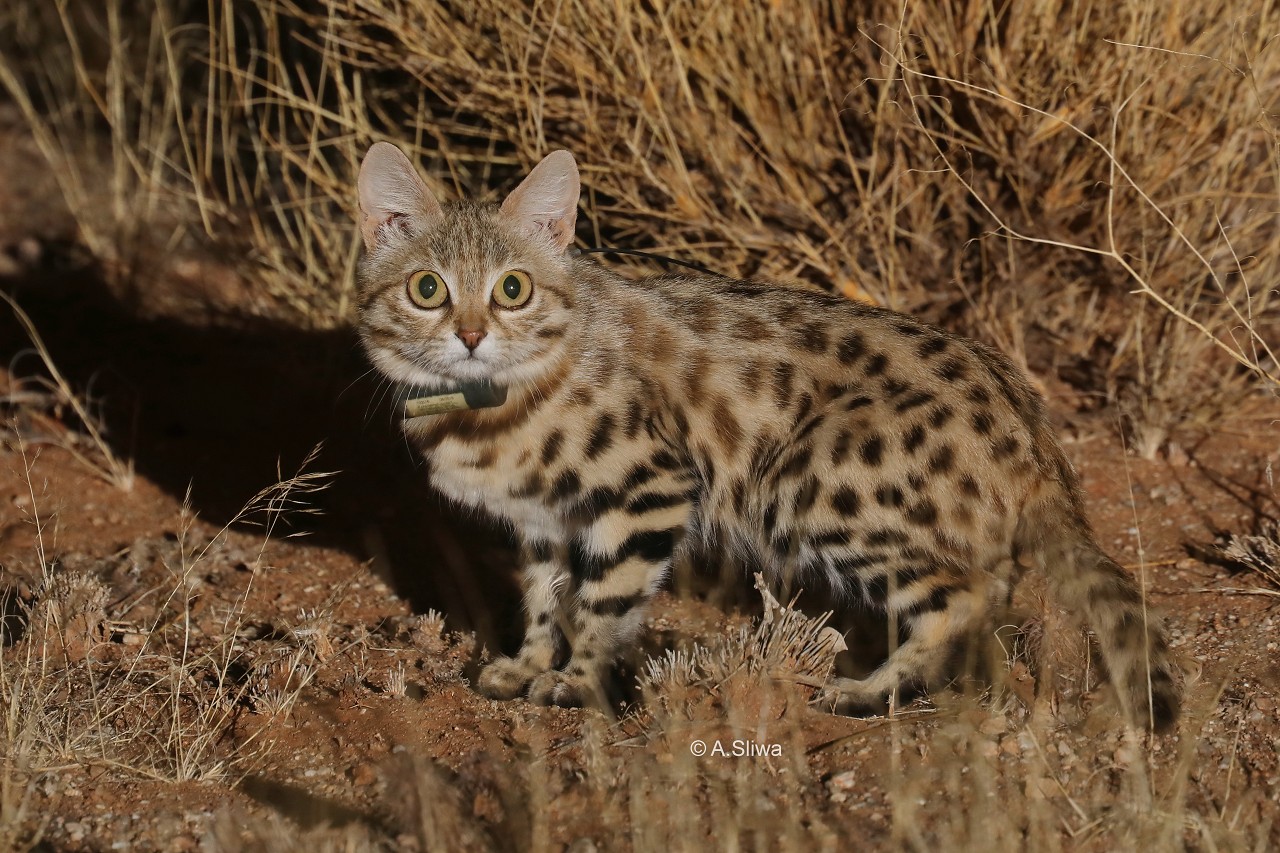
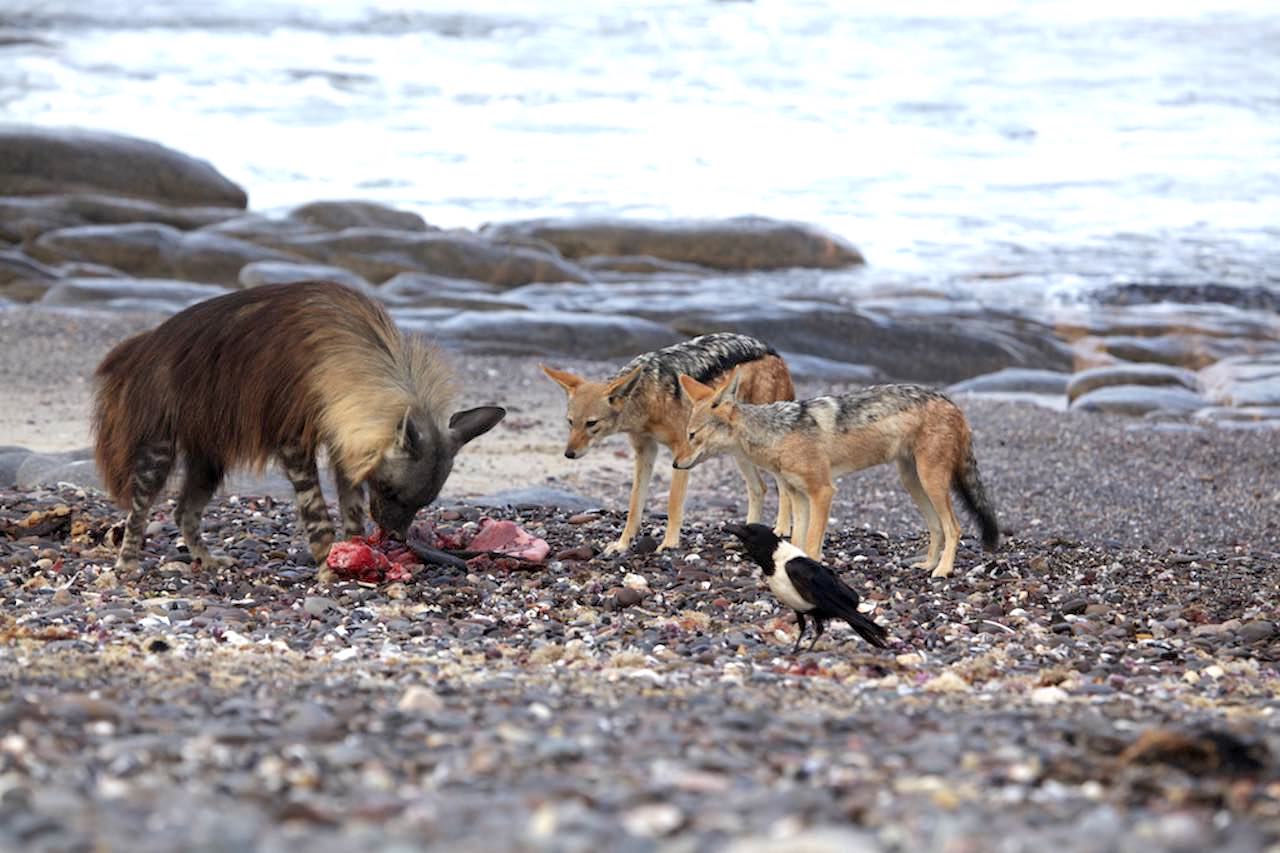
Seven carnivore species are reportedly killed in road accidents frequently enough for this to be considered a threat to their populations in some places. Since most carnivores are active during the night and at dawn or dusk, most of these accidents occur at these times. Tar roads that bisect national parks (e.g. Bwabwata) are a major source of road fatalities. Limiting the speed and restricting travel times to daylight hours would prevent many accidents and reduce the number of carnivores killed on the roads.
Trophy hunting was flagged as a threat to all three big cat species and the two hyaena species. The social structures and behavioural ecology of these species make their populations especially vulnerable to over-harvesting. Lions and leopards are infanticidal – i.e. when new males take over a territory they will kill any young cubs that are present at the time – which means that the removal of a dominant breeding male by any means could result in losing the cubs he sired. Both hyaena species have complex social structures that are disrupted by the removal of high-ranking females; females are easily mistaken for males during a hunt because they are slightly larger and their sex is difficult to determine (especially for spotted hyaena females, which have a pseudo-penis and pseudo-testes).
This threat is more complex than others, however, since the substantial money generated from trophy-hunting the big cats can offset livestock or game losses they cause, thus improving farmer tolerance and reducing human-carnivore conflict. Tolerance for leopards on freehold farms, where they occur widely, is linked to their value for trophy hunting. For all three big cat species, hunting quotas must be balanced to reduce negative impacts on cat populations and increase the benefits flowing to the most affected farmers.


The argument for hunting hyaenas is much weaker, as the trophy prices for both species are low. Brown hyaenas are primarily scavengers and rarely cause livestock losses, thus hunting them is unlikely to reduce human-carnivore conflict. Spotted hyaenas do cause livestock losses, but the low trophy fee is unlikely to increase farmer tolerance. Consequently, little is gained from hyaena trophy hunting in terms of increased tolerance, while the negative impacts of mistakenly hunting female hyaenas can be severe.
Negative perceptions of carnivores are an overarching threat that exacerbates other issues, especially human-carnivore conflict. Spotted hyaenas and African wild dogs are particularly disliked by farmers, while fishermen perceive the two otter species to be a threat to fish populations. A different kind of perception affects the black-footed cat, which although assessed as Vulnerable both nationally and internationally, receives no formal protection in Namibia because it is perceived to be secure. How we perceive carnivores thus affects the degree to which they are persecuted and our willingness to conserve them.
Climate change affected four species, especially the otter species and serval that rely on wetter habitats which are predicted to become drier over time. Disease was a particular concern for African wild dogs. They are highly susceptible to diseases borne by domestic dogs – e.g. rabies, canine distemper and parvovirus. Studies of black-footed cats show high mortality rates due to a combination of disease and predation by larger carnivores (e.g. black-backed jackal). The final risk that affected more than one species was prey decline, which is a problem in some areas. Lack of natural prey exacerbates human-carnivore conflict, as livestock are more frequently killed when prey populations are low.
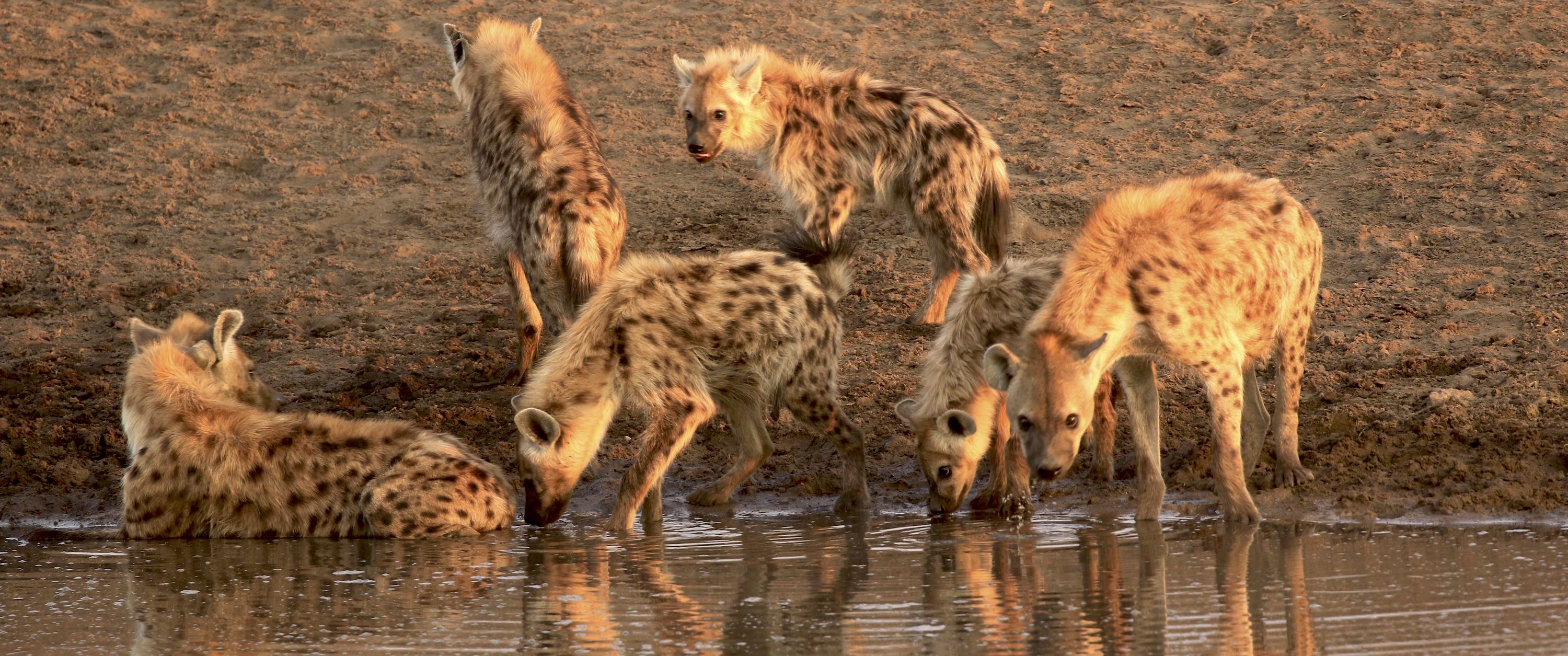
Addressing the threats by taking action
In a similar way to the threats, some actions can benefit several species at once, provided they are centrally coordinated. To achieve this, one of the recommendations of the Carnivore Red Data Book is to establish a Carnivore Working Group chaired by MEFT that includes LCMAN members, farmers unions, conservancies, hunters' associations and universities. Since many of the actions required – e.g. mitigating human-wildlife conflict, reducing bycatch and improving habitats – need to be implemented by multiple stakeholders, this working group can chart a collective way forward that takes different perspectives and interests into account. While the Carnivore Red Data Book provides a scientific perspective on each species, successful conservation requires scientific findings to be merged with socio-economic realities, which are best understood by non-academic stakeholder groups.
Within the working group, specialist task forces could be set up to focus on highly threatened species that face unique challenges (e.g. African wild dog), or multiple similar species (e.g. brown and spotted hyaenas), or to address some overarching common threats (e.g. negative perceptions). Besides the threatened species, many of the smaller carnivores are understudied in Namibia according to the Carnivore Red Book assessments – another task force could be dedicated to filling these research gaps.
As a group chaired by MEFT, the recommendations and ideas relating to policy changes are more likely to be taken up than if special interest groups approach MEFT individually. The presence of farmers, hunters and conservancies in the group is crucial to ensuring that these ideas are practical in the real world. Conservation organisations, universities and MEFT officials can draw on their experience and research as a basis for joint research or conservation initiatives.
From a human point of view, carnivores are among the most revered and valued species in the world, yet they are also some of the most difficult to conserve. Producing the Carnivore Red Data Book is an important first step that presents our current knowledge of these species and the threats they face along with the actions required to address them. The next step is to establish the Carnivore Working Group to recommend policies, develop research agendas and action plans, and take practical steps towards improving the conservation status of carnivores in Namibia.
If you enjoyed this page, then you might also like:



For articles on similar topics, please click one of the following options:
For more great articles from Conservation Namibia see below...
Conservation Namibia brought to you by:
We use cookies to monitor site usage and to help improve it. See our Privacy Policy for details. By continuing to use the site, you acknowledge acceptance of our policy.










